Are you ready to explore the bountiful treasures that lie deep beneath and stretch across the vast expanse of the Treasure State?
Montana’s natural resources are as breathtaking as they are vital, and today you will find out why!
This article will take you on a journey into the heart of Montana’s natural heritage, from vast agricultural lands and forests to the majestic Gray Wolves and Grizzly Bears that call these regions home.
We will touch upon the state’s mineral and water resources and the critical economic and ecological roles they play.
Whether you enjoy the outdoors, are intrigued by the prospect of owning your own piece of Montana real estate, or are simply hungry for knowledge, get ready to be awestruck by the incredible wonders that await.
Come along as we explore Montana’s remarkable natural resources, and embrace the untamed spirit and abundant wildlife that make this state truly extraordinary.
Montana’s Natural Resources: Effect on Economy and Environment
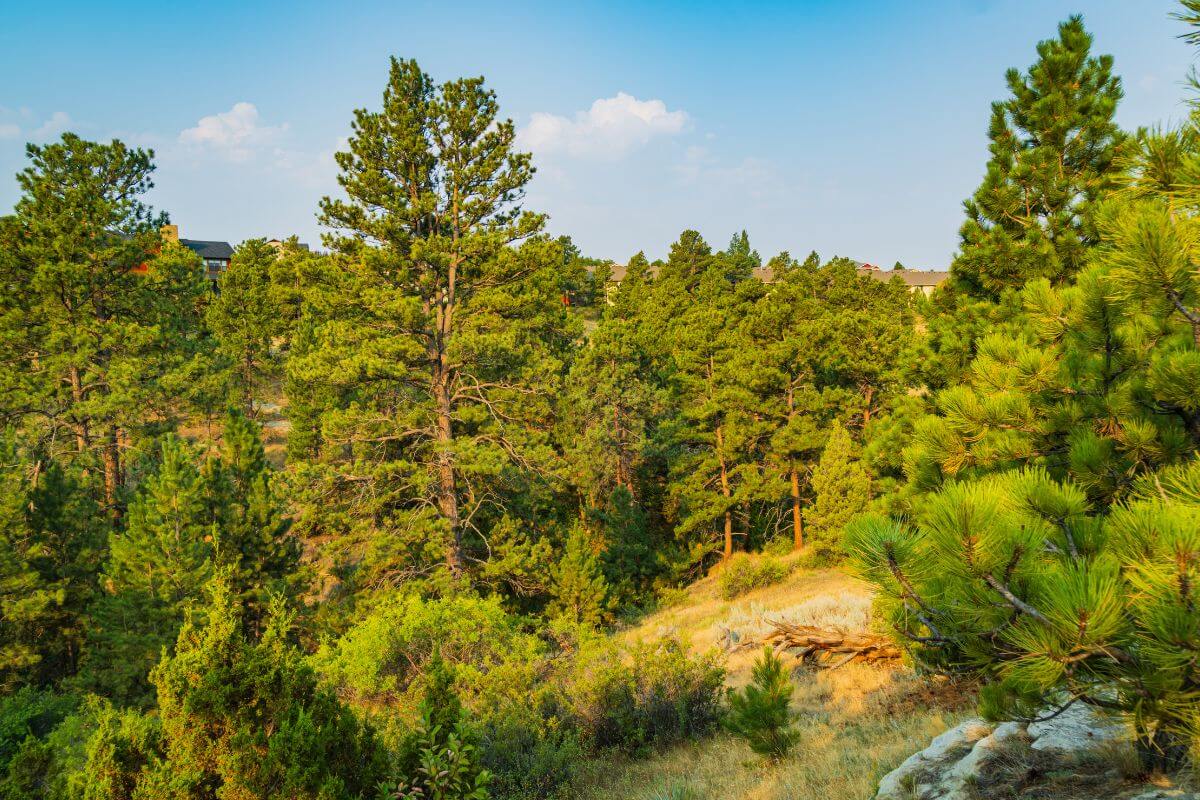
Montana’s natural resources play a crucial role in shaping both its economy and environment. Not only are these resources crucial contributors to the state’s GDP, but they also generate numerous jobs for its residents.
Montana’s national resource industries are major drivers of the state’s economy, as per the Bureau of Business and Economic Research at the University of Montana.
Whether to partake in outdoor recreational activities or chance an encounter with its rich wildlife, countless tourists flock to Montana’s picturesque landscapes and national parks every year.
This helps generate substantial revenue and a thriving service sector for the Big Sky Country.
Renowned natural treasures, like Glacier National Park and Yellowstone National Park, drive the economy up while offering visitors and residents alike experiences to remember.
Mineral resources, such as gold, copper, silver, and petroleum, are also vital to the state’s economic growth and development.
Agricultural resources, including water resources, sprawling lands, and fertile soil, support Montana’s thriving agricultural sector and other primary industries.
They are crucial to agricultural activities like wheat production, cattle ranching, and dairy farming.
Montana’s extensive forests cover millions of acres and support a prosperous timber industry. Harvesting timber from these forests contributes to the state’s economy and provides raw materials for numerous other industries.
To protect its precious resources, Montana has committed to sustainable forestry practices to balance conservation with economic advantages and maintain ecological equilibrium.
Natural Resources in Montana
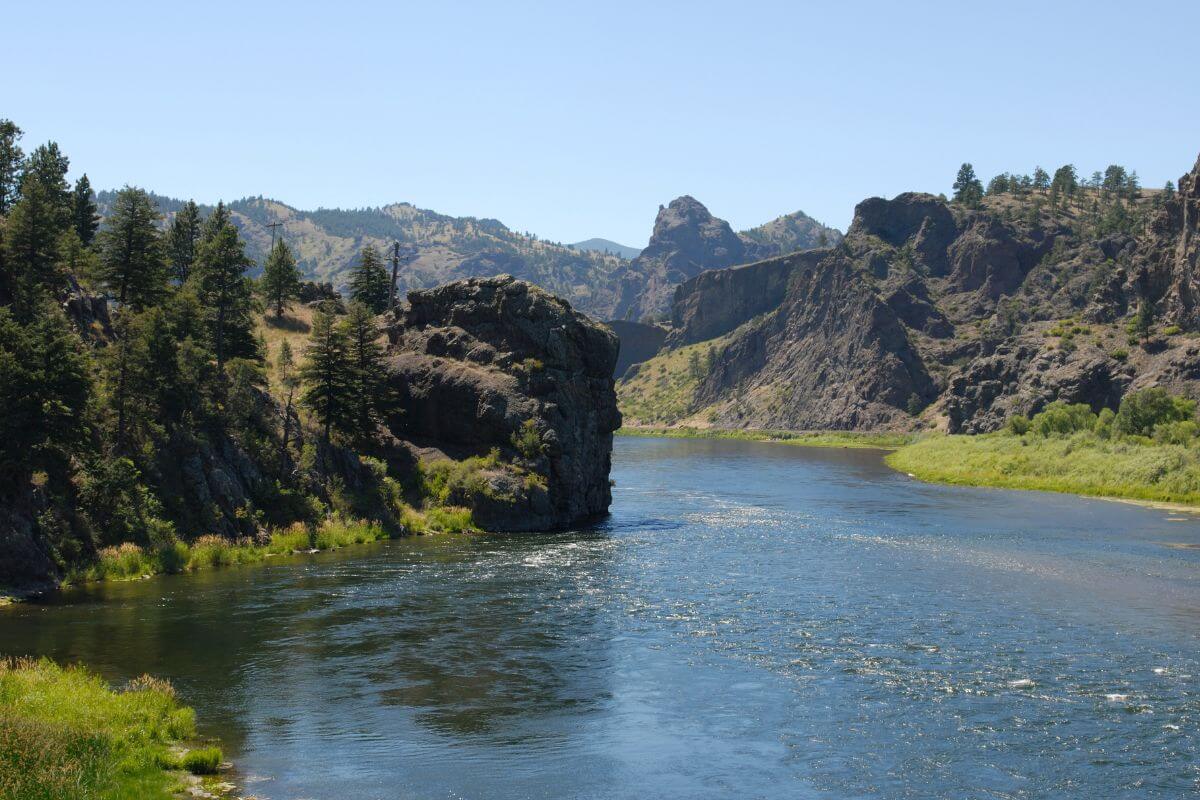
Montana’s magnificent landscapes hold abundant natural resources that make this state truly remarkable.
From sprawling plains and timber-rich forests to breathtaking national parks and seemingly endless mineral reserves, Montana is home to a wide range of natural treasures.
Montana’s Mineral Resources

Montana’s presently thriving economy can be attributed partly to its mineral-rich lands.
A treasure trove of diverse minerals, among them: talc, copper, petroleum, natural gas, vermiculite, gravel, and clay, lie beneath the surface of Montana.
And that’s not even the entirety of the state’s geological bounty when you consider the presence of its prime mining hotspots for garnets, platinum, and sapphire.
Montana’s industrial growth is fueled by these resources, which also pave the way to progress for other industries.
The extraction of mineral resources brings a wealth of economic advantages to the state, including employment opportunities for residents that bolster local economies in turn.
The cycle of resource utilization and economic growth helps cultivate future leaders and ensure a prosperous tomorrow for future generations.
Montana’s mineral-rich legacy is woven into the very fabric of its natural heritage. From the notable gold discoveries of the Montana Gold Rush to the copper mining innovations of the Industrial Boom, these momentous events left indelible marks on the state’s history.
Petroleum and natural gas resources enter the mix to further boost Montana’s mineral wealth.
Conventional and unconventional reserves are found throughout the state, their extraction activities playing a crucial role in both energy production and the state’s economy.
Montana’s mineral resources are a testament to its natural wealth and provide the foundation for a prosperous future.
- Learn more about Montana’s Treasures
Montana’s Energy Resources
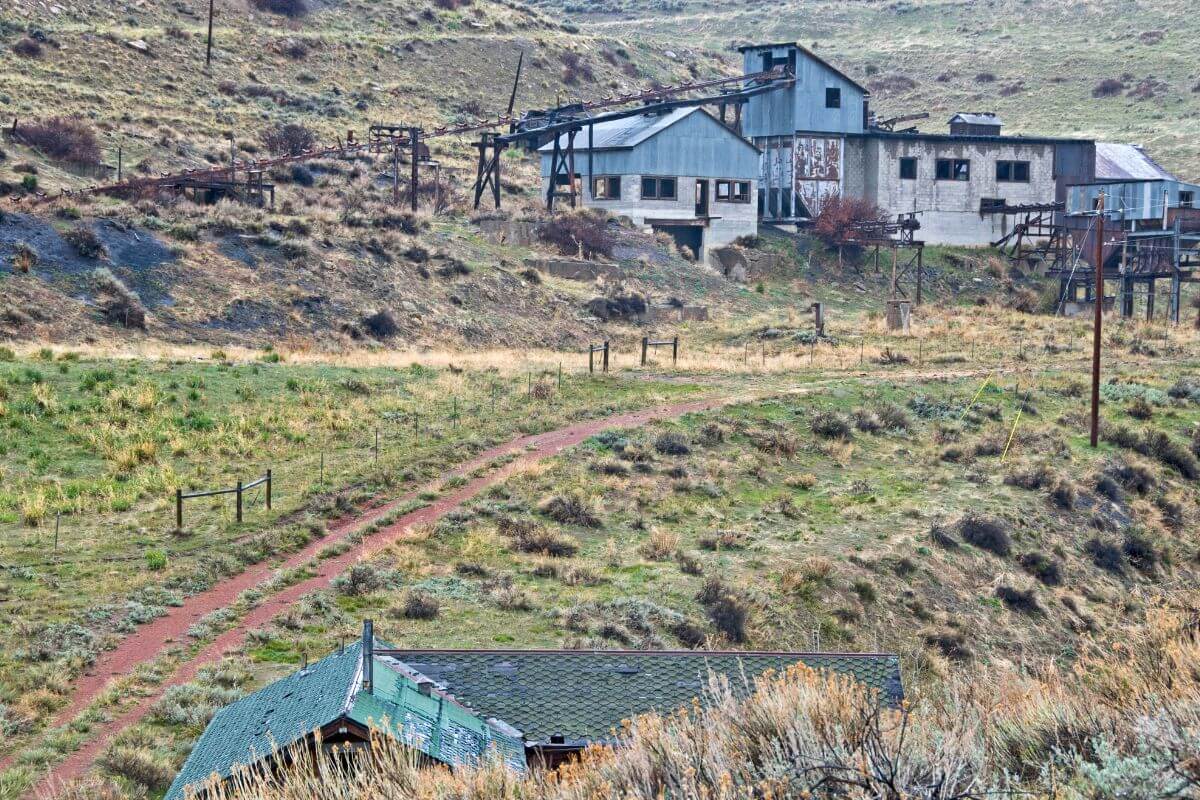
Montana means business when it comes to its energy resources. Coal mining in the eastern Great Plains, alone, is something of a marvel.
Not only does coal mining play a pivotal role in Montana’s energy industry, ensuring a steady supply of coal-harnessed power to its communities, but it also gives the state an economic edge.
In the mix with coal is oil and gas, which lie in wait within the hidden reserves beneath Montana’s surface, just waiting to be tapped.
Not far behind is the renewable energy sector represented mainly by solar and wind energy. Between the abundance of sunlight that blankets the state and the powerful gusts that sweep across it regularly, the future looks promising for the sustainable energy sector.
Then, there’s hydropower, fueled by Montana’s raging rivers and streams. It utilizes the power of flowing water to provide communities across the state with clean, reliable electricity.
Tapping into renewable energy helps Montana transition into a greener and more sustainable future. Rising global temperatures stress the importance of this step in the advancement of Montana’s energy industry.
In developing energy resources, Montana helps reduce its carbon footprint and paves the way to energy self-sufficiency in the state.
Montana’s Forest and Timber Resources
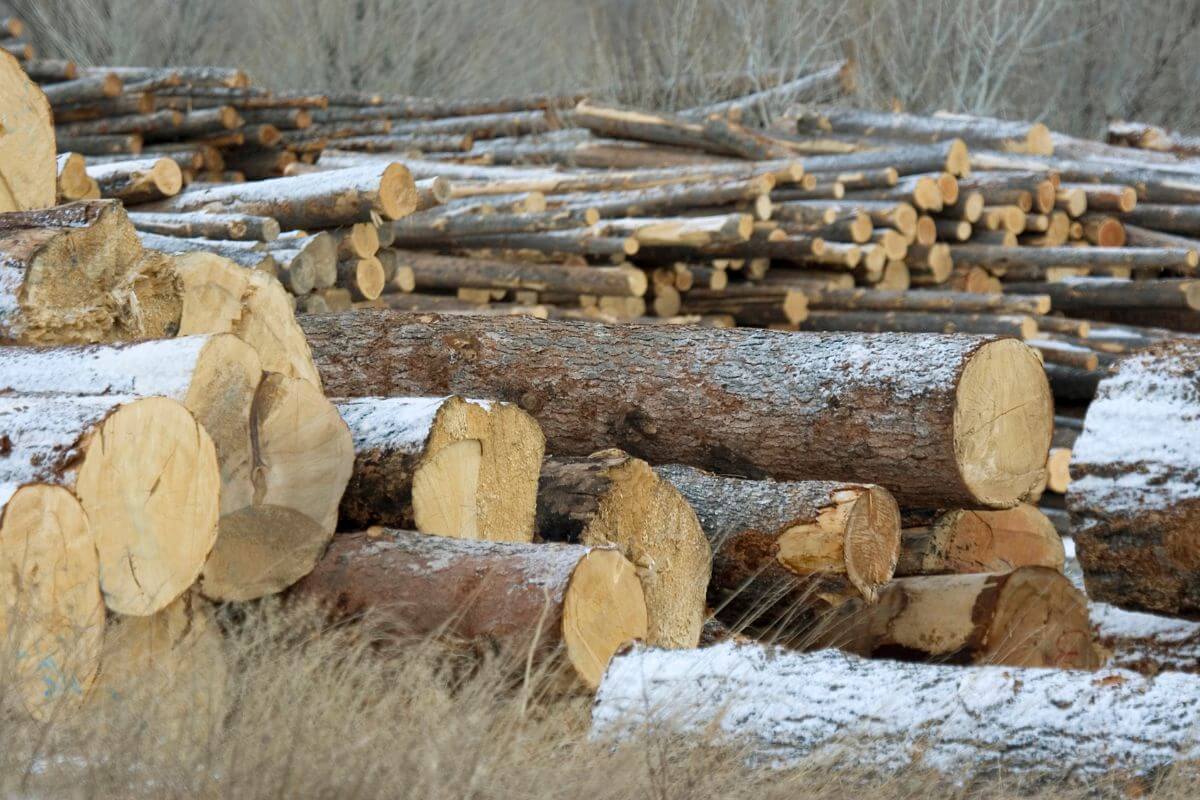
Montana is blessed with vast forests that cover approximately 25 million acres and hold a seemingly unlimited supply of timber resources.
These expansive forests are not only a valuable source of timber, but they also support diverse ecosystems that are vital to the state’s ecology.
The timber industry plays a significant role in Montana’s economy, generating substantial revenue and providing employment opportunities for local communities.
Logging and lumber processing are major industries that contribute to the state’s economic growth and stability.
Montana’s commercial forests are home to various tree species, including the Douglas-fir, Lodgepole Pine, Ponderosa Pine, and Western Larch. These trees are harvested and processed into a range of timber products, such as lumber, plywood, and poles.
To ensure the sustainability of forest resources, Montana prioritizes forest health and protection as part of its natural resource conservation programs.
Reforestation efforts and selective logging practices also feature in these programs to create a balance between resource extraction and ecosystem preservation.
Furthermore, ecosystem management strategies take into account wildlife habitat and water quality, promoting the long-term viability of these precious natural resources.
Funding conservation initiatives and implementing simple maintenance tasks, such as wildfire prevention, are essential in safeguarding the future of Montana’s commercial forests and preserving their ecological importance for future generations.
Montana’s Agricultural Resources
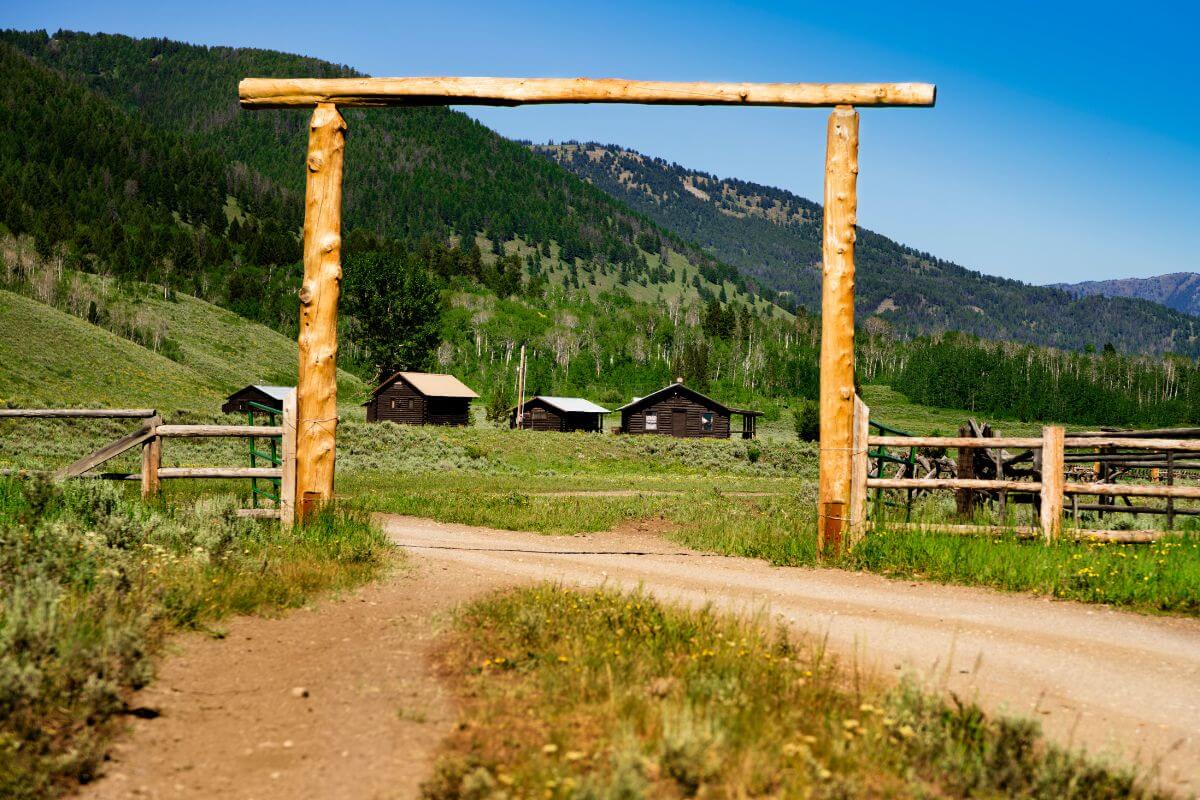
From livestock production to crop and dairy farming, the agricultural industry in Montana brims with productivity and economic significance.
Under the boundless sky, Montana’s rangelands and pasturelands offer abundant grazing opportunities for livestock.
Cattle ranching stands out as a prominent agricultural activity in Montana. Beef production, emanating from fertile soils and flourishing grasslands, positions itself alongside it as a significant contributor to the state’s agricultural economy.
The shining star of Montana’s fields, wheat dazzles with its golden hues and variety of forms, including hard red spring wheat, durum wheat, and winter wheat.
Montana’s commitment to diversity extends beyond wheat, encompassing other major field crops such as barley, sugar beets, pulse crops (chickpeas, dry peas, and lentils), and potatoes.
Beyond economic purposes, Montana’s farmers and ranchers embrace sustainable agricultural practices to weave a delicate tapestry between productivity and conservation.
By implementing sustainability measures, Montana ensures the conservation of soil, protection of water resources, and preservation of habitats that wildlife depends on—all vital components of a thriving agriculture sector.
In this region of productive lands and bountiful harvests, Montana’s agricultural resources not only benefit soil and nourish bodies, but they also fuel the essence of a way of life woven into the very fabric of this remarkable state.
Montana’s Water Resources
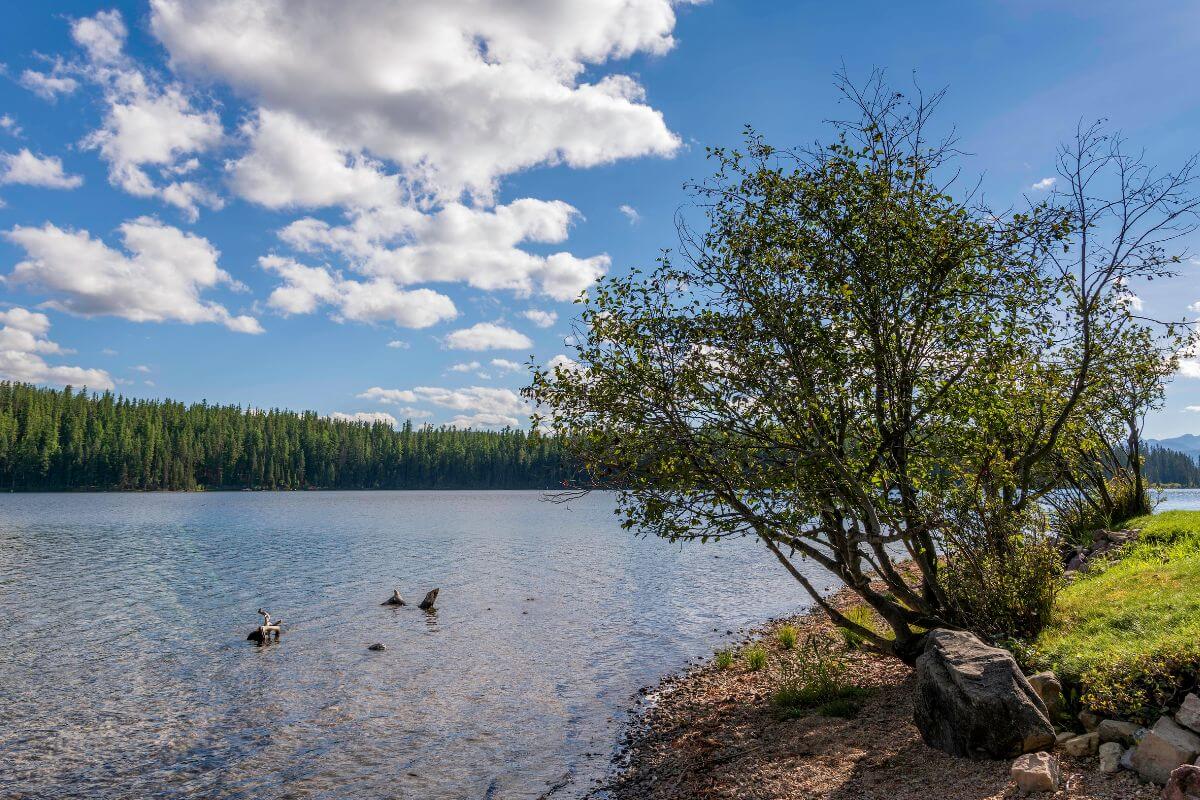
Home to over 3,000 lakes and reservoirs and approximately 169,829 miles of rivers, Montana’s waterways are a sight to behold. Among these rivers, 388 miles have been designated as wild and scenic, representing a mere sliver—roughly 2/10ths of 1%—of the state’s river miles.
Among the major rivers in Montana are the mighty Missouri River, the spectacular Yellowstone River, and the picturesque Clark Fork River.
These bodies of water not only support a rich diversity of wildlife and provide essential habitats for countless species, but they also offer unparalleled scenic beauty and endless recreational opportunities.
Fishing, boating, and rafting enthusiasts alike flock to these waters in pursuit of adventure and relaxation.
Montana’s agricultural sector is closely intertwined with its water resources through irrigation.
With irrigation accounting for a substantial portion of water withdrawals in the state, crops such as wheat, barley, and hay thrive under the careful stewardship of farmers who harness the power of water to irrigate their fields and nurture their crops.
That said, periods of drought can pose significant challenges in terms of water availability and management.
To address these challenges, Montana has established comprehensive water rights systems and regulations to allocate water resources among various users and ensure sustainable water use.
Montana strives to strike a delicate balance between the needs of its agricultural industry, wildlife, and ecosystems, and the demands of a growing population through these measures.
In this land of natural wonders, water resources play a vital role, connecting landscapes, nourishing crops, supporting wildlife, and enriching the lives of Montanans and visitors alike.
Montana’s Wildlife and Natural Habitats
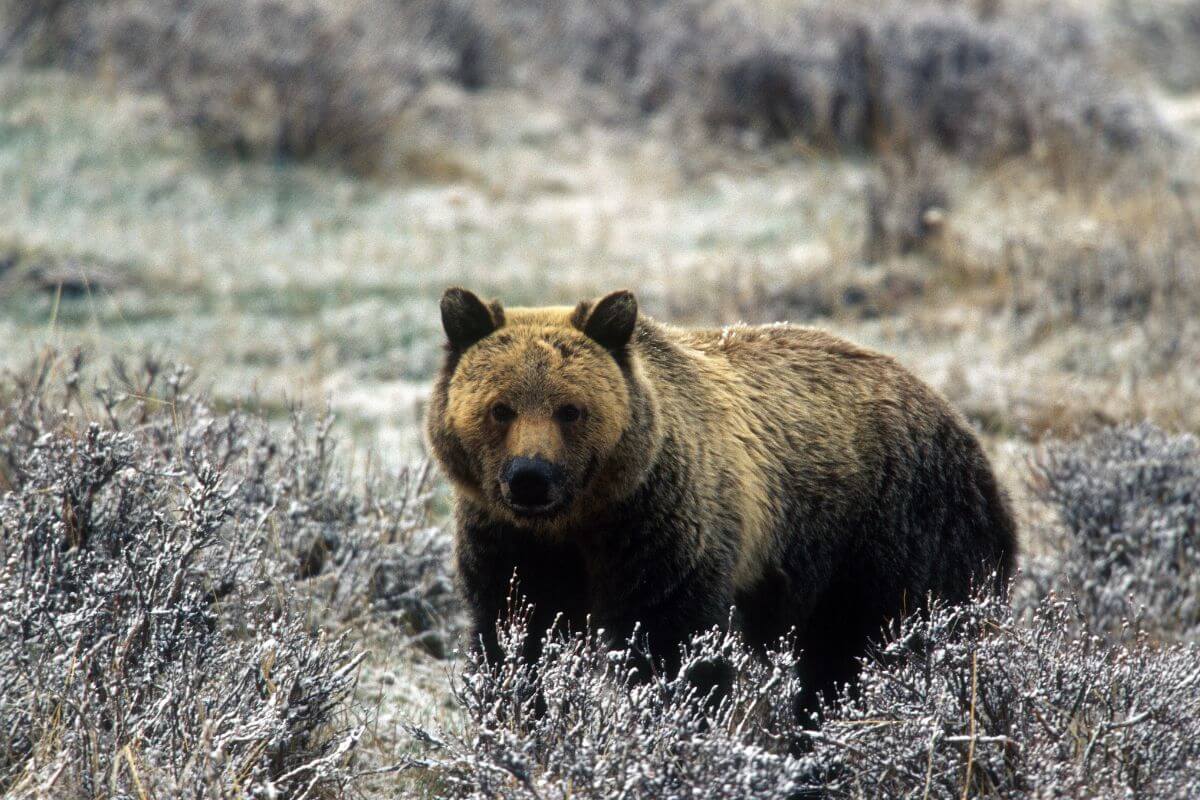
From towering mountain ranges to expansive grasslands, Montana is a sanctuary for a wide array of animal species.
Montana is renowned for its iconic wildlife, including the captivating Grizzly Bears and Gray Wolves. These majestic creatures are not only symbols of untamed wilderness, but they are also vital components of the state’s delicate ecosystems.
The sight of grizzlies roaming freely in the rugged mountains or wolves traversing through the dense forests tends to leave one in awe.
These charismatic species aside, Montana is home to an abundance of other animal resources.
Among them are Rocky Mountain goats and Bighorn Sheep, both of which are known for their impeccable balance as they navigate cliffsides and rocky ledges.
Elk, Mule Deer, and Whitetail Deer roam the grasslands and forested areas, captivating observers with their grace and beauty.
Montana’s varied landscapes, from its lush forests to sprawling grasslands, provide crucial habitats for these creatures.
Glacier National Park and Yellowstone National Park are not just renowned tourist attractions, but they are also a sanctuary for wildlife.
These parks serve as migratory corridors for numerous species, allowing them to survive and thrive.
As it is above ground, Montana’s underwater world also hosts a diverse range of animal resources.
Major rivers like the Missouri, Flathead, and Yellowstone Rivers play significant roles in supporting a myriad of aquatic life. These waterways are home to sought-after fish species, including trout and sturgeon.
The wetlands surrounding these rivers are also critical breeding grounds for waterfowl and other migratory birds, providing essential habitats for them.
Montana’s Natural Resource Conservation Efforts
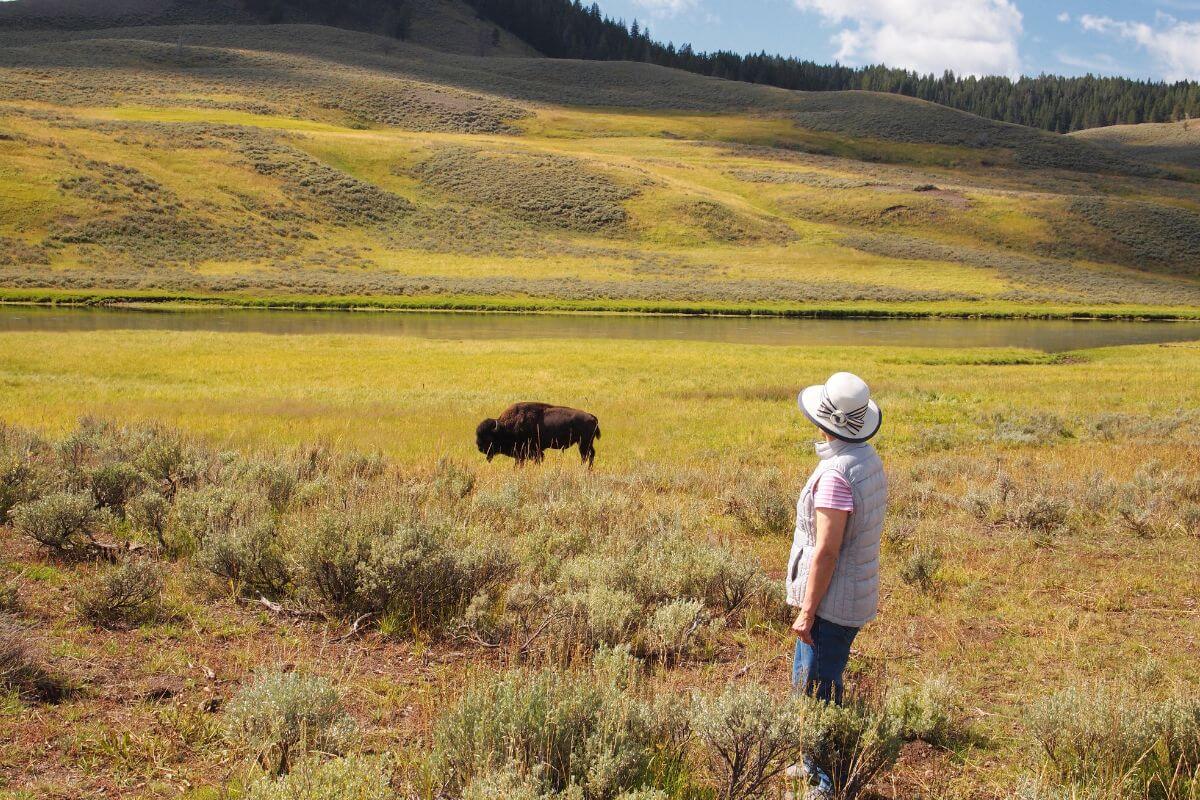
As a state with diverse ecosystems and a rich heritage, Montana faces unique challenges in balancing natural resource concerns with its conservation goals.
The Montana Department of Natural Resources and Conservation’s (DNRC) role in implementing programs and initiatives that promote biodiversity, sustainable land and water management, and mitigation of human impacts is pivotal.
To protect the state’s valuable resources, this agency relies on resource assessment and monitoring to guide its efforts.
Resource assessment serves as a foundation for effective management.
The DNRC employs dedicated natural resource managers who utilize technical resources and scientific expertise to evaluate the health and sustainability of Montana’s land cover and soil composition.
Through extensive research and data analysis, they gain comprehensive insights into the state’s natural resources, identifying specific issues such as soil erosion, habitat loss, and potential threats to biodiversity.
With valuable findings, Montana’s conservation agency can formulate science-based strategies to address these natural resource challenges.
To ensure the successful implementation of its natural resource goals, the DNRC employs an integrated approach that involves both proactive measures and ongoing resource monitoring.
One of the key aspects of the DNRC’s work is providing technical resources to landowners, land managers, businesses, and the public.
It offers a wealth of information and expertise on various topics, including sustainable forestry practices, land cover mapping, soil health, and erosion prevention techniques.
By combining science-based soil information with on-the-ground expertise, the DNRC strives to mitigate soil erosion and preserve the state’s valuable range of lands.
Montana’s commitment to balancing natural resource concerns with conservation goals is exemplified through the diligent work of the Montana Department of Natural Resources and Conservation.
Montana-focused conservation efforts are rooted in the state’s commitment to preserving its natural heritage for future generations.
Natural Resources in Montana Final Thoughts
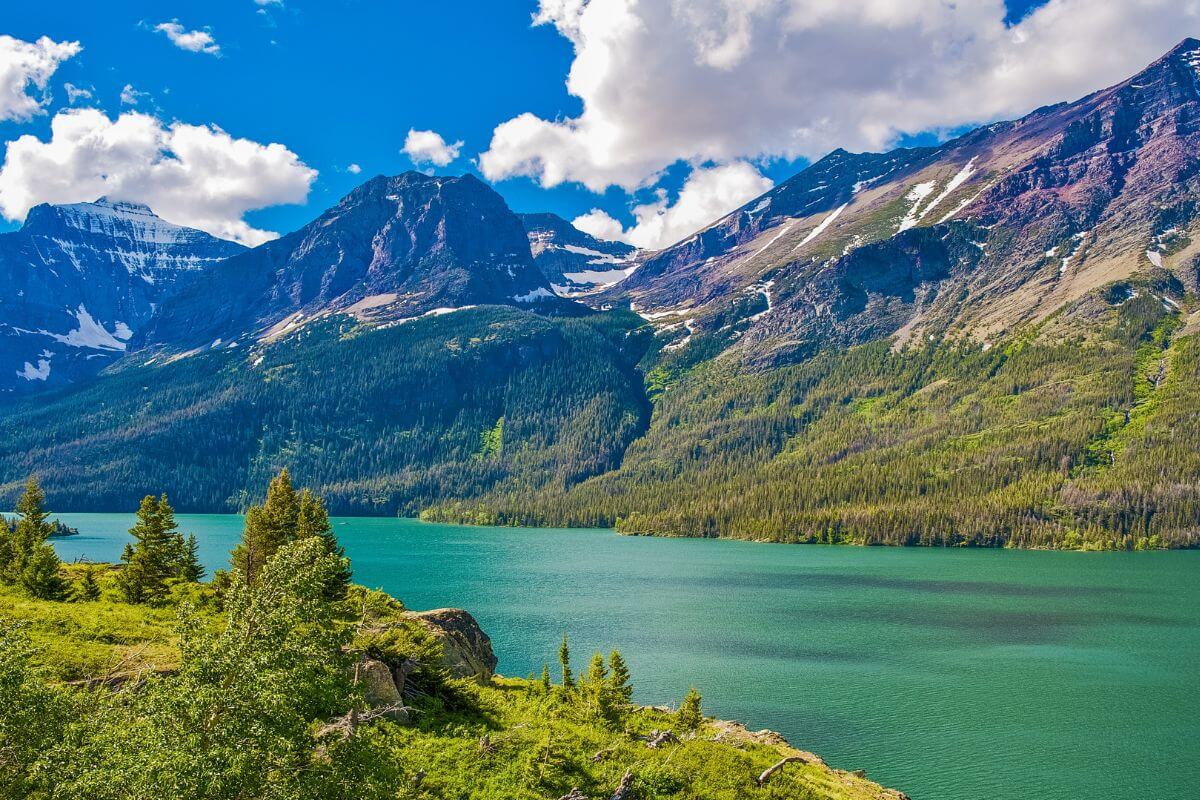
Montana’s natural resources not only define its identity but also play a significant role in shaping its economy and environment.
Montana is blessed with an abundance of natural resources, including mineral resources, water and energy resources, wildlife habitats, agricultural resources, and forest resources, that contribute to its GDP, provide employment opportunities, and offer recreational activities.
Montana’s commitment to conservation efforts ensures the protection of these valuable natural resources.
By investing in land conservation, promoting sustainable practices, and fostering education and awareness, the state can preserve its natural beauty for future generations to enjoy.
Natural Resources in Montana FAQs
1. Is Montana Rich in Natural Resources?
Yes, it is! Montana’s abundant natural resources bring significant ecological and environmental contributions to the state.
The state is a treasure trove of diverse natural resources, including vast mineral deposits, abundant energy resources, and extensive forest lands.
2. What Is Montana’s Most Valuable Resource?
Montana’s most valuable resource is its abundant natural beauty.
The state’s breathtaking landscapes, including its majestic mountains, pristine lakes, and vast forests, attract millions of visitors each year and contribute significantly to the state’s economy through tourism and outdoor recreation.
Montana’s natural beauty is also vital to the well-being of its residents, providing opportunities for outdoor activities, relaxation, and a close connection to nature.
3. What Natural Resources Is Montana Known For?
Montana is known for its abundant natural resources, including its diverse landscape, vast forests, rich mineral deposits, fertile agricultural land, abundant water resources, and wide-ranging wildlife habitats.
The state boasts breathtaking scenery, ranging from snow-capped mountains and pristine rivers to sprawling prairies and dense forests.
Montana’s forests provide valuable timber resources, while its mineral deposits include gold, copper, coal, and oil.
4. What Is Montana’s Biggest Industry?
Montana’s biggest industry is agriculture.
According to the National Association of State Departments of Agriculture, one out of every six workers in Montana is employed in agriculture-related fields, highlighting the significance and unique characteristics of this industry in the state.
Montana’s thriving agricultural industry plays a vital role in the state’s economy and continues to be a major driver of growth and prosperity.
5. Is Farming Big in Montana?
Yes, farming is indeed a big industry in Montana.
With approximately 58 million acres (62%) of the state’s 93 million acres of land used for agricultural production, it’s clear that farming plays a significant role in Montana’s economy.
The state’s farming industry is diverse, with major livestock, such as cattle, and crops, like wheat, barley, pulse crops, hay, and oilseeds, being cultivated across the state.
Satisfy your curiosity on all things Montana by checking these wonderful reads:
- https://www.rivers.gov/montana.php
- https://deq.mt.gov/Water
- http://www.mbmg.mtech.edu/
- https://dnrc.mt.gov/
- https://commerce.mt.gov/Business
- https://www.eia.gov/state/analysis.php?sid=MT
- https://www.nrcs.usda.gov/conservation-basics/conservation-by-state/montana
- https://www.montana.edu/
- https://dnrc.mt.gov/_docs/forestry/Montana_Forest_Action_Plan_12.22.2020.pdf
- https://dnrc.mt.gov/_docs/forestry/Montana_Forest_Action_Plan_12.22.2020.pdf

